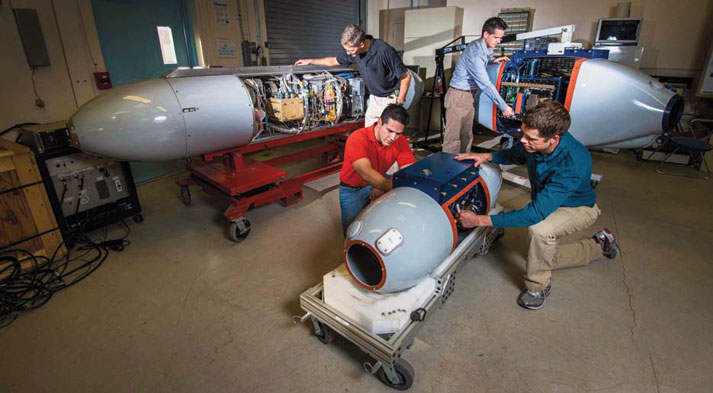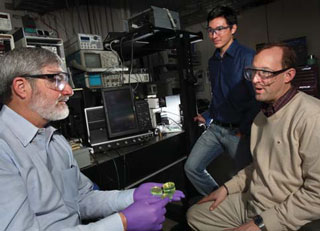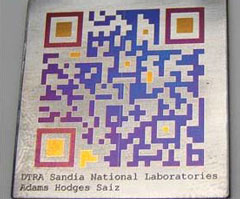
Harvester underwent successful flight testing and demonstration on both C-130H manned aircraft and MQ9 unmanned aircraft, and was officially delivered to the US Air Force, all in FY14. Harvester collects airborne debris from a nuclear explosion, enabling subsequent detailed forensic analysis of collected samples, and includes two particulate sampling pods with radioisotope identification capability and a high-sensitivity gamma directional sensor. Harvester’s modular design enabled its rapid integration onto both aircraft. DoD and NA-22 supported its development by Centers 5900, 5500, and 6600. The Harvester system was a critical component of the team that won DoD’s Joint Concept Technology Demonstration (JCTD) team of the year award for 2014. (5900, 5500, 5700, 6600) DSA [NAW]

Patrick Feng (8126) and his team were awarded the R&D 100 Award for their development of Triplet-Harvesting Plastic Scintillators, funded by the DOE/NNSA/ NA-221. Automated sensors are needed to screen cargo at US ports of entry for radiological materials that could be weaponized. THP scintillators give off more light at less cost, and respond faster than current scintillators. Triplet-harvesting converts energy from an organic polymer matrix to highly luminescent triplet energy states. The unique response provides the ability to discriminate threat materials from benign radiation sources. (5700, 8100) DSA [RGND]
Working with NA-24, NNSA’s Nonproliferation & International Security organization, members of Sandia’s International Nuclear Risk Reduction department worked with Video Services to produce a short video explaining to the Indian and Pakistani populations the issues of a parallel, transparent process of dismantling obsolete missiles. The video is a documentary of young Indians and Pakistanis participating in transparency exercises (developed by Sandia) using real missiles and virtual reality tools (also developed by Sandia). Thus far, this training video has been seen on social media by more than 2.3 million people living in India and Pakistan. (6800, 3600) IHNS [RGND]

A four-year project between Sandia’s International Nuclear/Radiological Security Dept. 6811 and the South African Nuclear Energy Corporation (NECSA) culminated in a successful physical protection assessment by a multiagency US government team (DOE/NNSA, Department of State, and Nuclear Regulatory Commission) that will allow NECSA to receive US-origin low-enriched uranium (LEU). This effort ensures that South Africa can further reduce the potential of nuclear proliferation as well as provide a stable supply of LEU-produced medical isotopes for the world market. (6800) IHNS [RGND]
Because conventional markings and seals can be duplicated or counterfeited, Sandia materials researchers have developed a patented process to create trusted tamper-indication markings using pulsed lasers. This process creates unique, non-reproducible color patterns and features to determine whether a component has been compromised. On metals that oxidize, intrinsic, microstructurally unique color patterns and one-of-a-kind features are formed, while on materials that do not oxidize, distinctive periodic ripple patterns are formed that cannot be replicated. This commercially viable technique can be used to readily authenticate components. (1800, 1500, 2600, 6800) NW [NW]